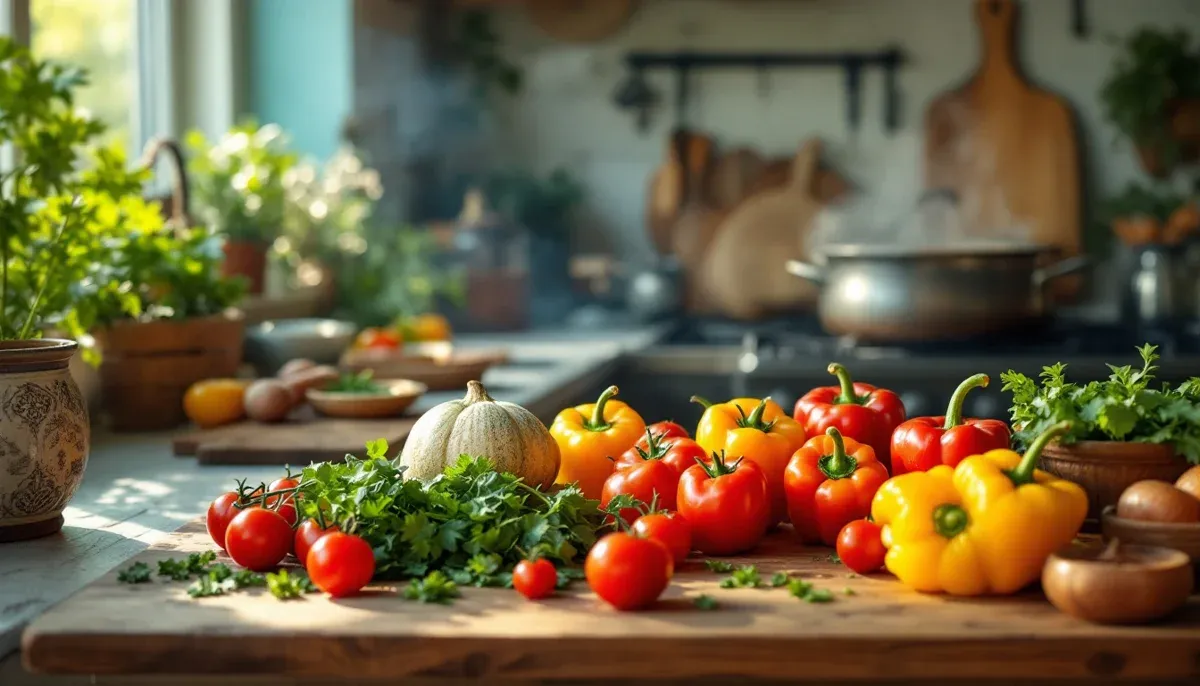Traditional Italian Cuisine and Its Health Impacts: A Hitchhiker’s Guide
Introduction Welcome, traveler, to the bewildering world of traditional Italian cuisine – a place where flavor

So imagine this: you eat a salad. It has spinach, tomatoes, a few carrots, and one of those sad little broccoli florets that somehow always ends up in the bottom of the bowl like the underdog in a teen drama. You feel healthy. Powerful. Like you could punch a vitamin.
But here’s the twist: just because you eat a nutrient doesn’t mean your body actually uses it. Welcome to the wild, wonderful, heartbreakingly complicated world of nutrient bioavailability, where your kale has secrets and your gut bacteria might be ghosting your multivitamin.
This is a story about spinach that lies to you, tomatoes that need a hot bath to shine, and garlic that just wants to be heard (but only if you crush it and let it rest, which is a little dramatic, but okay). It’s also about the way your genes and your gut can either be the MVPs of your nutrition team—or benchwarmers who drop the ball.
What follows isn’t just science. It’s the emotional rollercoaster of food and fate. Because your health isn’t just what you eat. It’s how you cook it, who you eat it with, whether your internal ecosystem is thriving, and which molecular dice your DNA rolled.
Ready? Let’s dive into the leafy-green chaos.
You can post this on your fridge, tattoo it on your soul, or just use it to win an argument with that one friend who insists raw carrots are better. (Spoiler: they’re not. Unless you’re a rabbit.)
Top Tips for Maximizing Nutrient Bioavailability

Bioavailability is the plot beneath the plot. It’s the reason your spinach might be ghosting your bones and your tomatoes need a plus-one. And while science keeps updating the script, the moral stays the same: it’s not what you eat. It’s how your body lets it in.
DFTBA (Don’t Forget To Be Absorbing).
[1][11][17][19] Spinach oxalate studies.[4][8] Tomato lycopene and olive oil synergy.[5] Carrot β-carotene optimization.[6] Broccoli sulforaphane preservation.[7] Asparagus antioxidant retention.[9][13] Gut microbiome and oxalate metabolism.[20] Genetic influences on nutrient absorption.
[1] https://ppl-ai-file-upload.s3.amazonaws.com/web/direct-files/47602218/72dd372b-3784-4057-835c-b17e2b9ef88a/paste.txt
[2] https://ppl-ai-file-upload.s3.amazonaws.com/web/direct-files/47602218/6516a008-2e7f-42bf-92af-75d63f330502/paste-2.txt
[3] https://www.semanticscholar.org/paper/cfd162765388b981a679e1e4dc15080fc7ca4de6
[4] https://www.gustiamo.com/gustiblog/always-cook-tomatoes-with-extra-virgin-olive-oil/
[5] https://timesofindia.indiatimes.com/life-style/food-news/are-cooked-carrots-more-nutritious-than-raw-ones/photostory/80198115.cms
[6] https://www.aicr.org/resources/blog/broccoli-steam-it-to-boost-cancer-fighting-compounds/
[7] https://academic.oup.com/ijfst/article/44/5/1017/7865051
[8] https://www.macular.org/living-and-thriving-with-amd/nutrition/recipes/white-bean-with-kale
[9] https://fungi.com/blogs/articles/place-mushrooms-in-sunlight-to-get-your-vitamin-d
[10] https://pubmed.ncbi.nlm.nih.gov/24393738/
[11] https://pubmed.ncbi.nlm.nih.gov/12810415/
[12] https://www.semanticscholar.org/paper/18b6e9045e5ed417ee35837636e0a874ec0e44c6
[13] https://www.ncbi.nlm.nih.gov/pmc/articles/PMC11640078/
[14] https://www.semanticscholar.org/paper/58f3fbfa3caaa2e04ba1f8f1aa19a8c7a98d4761
[15] https://pubmed.ncbi.nlm.nih.gov/38911445/
[16] https://www.semanticscholar.org/paper/a6d2bef9ab7ca21e563b3ff5865729ce71976e10
[17] https://www.ncbi.nlm.nih.gov/pmc/articles/PMC11593830/
[18] https://www.semanticscholar.org/paper/67fd820904846cf19dc13f79447f9060e6e67b31
[19] https://www.nourishedliving.com/articles/quick-tip-garlic-dont-heat-for-ten-minutes
[20] https://www.reddit.com/r/nutrition/comments/gx6bhl/does_pan_cooking_spinach_or_other_dark_green/
[21] https://pubmed.ncbi.nlm.nih.gov/15927929/
[22] https://indianexpress.com/article/health-wellness/carrots-nutrition-benefits-antioxidants-vitamin-roast-steam-9744624/
[23] https://www.sciencedaily.com/releases/2005/03/050326114810.htm
[24] https://www.healthline.com/nutrition/asparagus-benefits
[25] https://www.macular.org/living-and-thriving-with-amd/nutrition/recipes/tuscan-kale-salad-recipe
[26] https://timesofindia.indiatimes.com/life-style/health-fitness/health-news/mushroom-and-vitamin-d-sunlight-can-sunlight-amp-up-vitamin-d-levels-in-mushrooms-factcheck/articleshow/110005244.cms
[27] https://www.eatingwell.com/article/275955/4-tips-for-how-to-cook-with-garlic/
[28] https://apjcn.nhri.org.tw/server/apjcn/12/2/219.pdf
[29] https://www.ttuhsc.edu/medicine/medical-education/documents/Plant_based_diet_in_chronic_inflammation.pdf
[30] https://www.reddit.com/r/nutrition/comments/k3p88g/do_carrots_have_to_be_cooked_in_order_to_be_able/
[31] https://www.reddit.com/r/ScientificNutrition/comments/nkbpnn/the_most_effective_ways_of_getting_large_doses_of/